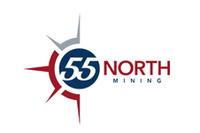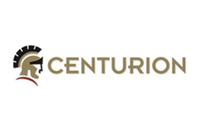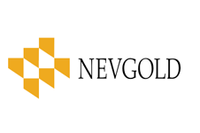Mining Experts Talk Gold, Copper and More in a Post-COVID-19 World
Reg Spencer of Canaccord, Adrian Prendergast of Morgans, Peter Arden of Bell Potter and Helen Lau of Argonaut shared their ideas on commodities in a post-COVID-19 world.
The coronavirus pandemic has impacted all commodities and markets, with lockdowns putting restraints on both supply and demand during the first half of 2020.
As the year unfolds and COVID-19 control measures start to ease, investors are watching closely to see how commodities and miners perform for the rest of the year.
Speaking at an online panel hosted by Mines and Money, Reg Spencer of Canaccord Genuity said the current global conditions have made it harder for explorers because the key source of funding for their activities is the equity markets — which were severely impacted during the peak panic of the pandemic.
“But for the most part, we have seen a lot of these (companies) be able to raise money, at least in the months leading up to the pandemic, and we’re seeing the fruits of their labor now with a number of discoveries being made, especially in Western Australia and gold and nickel,” he said.
Gold, copper could be winners
When looking back at how commodities performed in the previous global financial crisis in 2008, Spencer highlighted gold as a metal that stood out, with the metal experiencing a price rally that was driven by large-scale fiscal and monetary stimulus.
“Fast forward to 2020, we’re seeing a very similar thing play out in response to the economic downturn and global central banks’ attempts to stimulate the economy,” he said. “We have seen again huge fiscal and monetary stimulus, and we think that’s going to be a driver of significant gains in the gold price.”
Canaccord’s Spencer also sees the upside in copper in the current climate, and said that both supply- and demand-driven discovery rates for copper have been falling for many, many years now.
“On the demand side, copper is going to be a major beneficiary of electrification of transport and renewable energy into the grid, so from that perspective alone we think it’s got a better outlook.”
Strong future for iron ore
Helen Lau, an analyst at Argonaut, agreed. She said given that China now has the virus outbreak under control, and has also launched a lot of stimulus packages to support its economic growth, there are many opportunities in the commodity space, especially in the base metals.
The expert is interested in copper, nickel and iron ore at the moment, as prices have increased due to a demand recovery following China’s lifting of lockdowns, and also because of declining inventories.
“Because the demand is pretty good, quite solid, the pricing has been very good,” she said. “Therefore, the profitability of steel, for example, or the profitability of other processing companies is also improving. So that in turn is also driving up minerals demand — for example, iron ore.”
Speaking about prices, Lau added that futures prices have been increasing at a faster pace than spot prices, indicating that there’s a concern about maybe some slope, a little bit of pullback or consolidation.
“However, we think because the underlying demand is still increasing and still rising, the risks of a consolidation in the spot prices and also in the futures prices are not that not very likely,” she said.
When looking at the current global situation, Lau said that as countries start to come out from lockdown, demand will continue to pick up. But there are still some supply-side risks across the board, particularly in regions such as South America and South Asia.
Taking a deep dive into the iron ore space, which has seen prices increase in the past two years, Adrian Prendergast of Morgans said the sector has managed to stay strong despite different transitions in demand and/or global growth conditions.
“Demand has been really quite resilient, really seeing China’s standing at circa 1 billion tonnes to just over 1 billion tonnes per year of steel output, so certainly using it in a big way and producing it,” he said. “Also supportive has been the fact that despite the really high levels of steel activity, we’re still seeing really good digestion of inventories.”
In the short term, the senior analyst at Morgans has a very positive view of the space. “We really see some more significant upside for iron ore prices from here that’s been driven by the supply dynamics, which has really been the core feature of iron ore strength over the last couple of years,” he said.
“What we see for iron ore at the moment is we’ve gone from a picture in 2020 of marginal to potentially moderate surplus on weakening demand, to now having quite tight demand/supply conditions, because of the issues that have rocked South America and Brazil.”
Lithium down, but not out
Looking over to the lithium space, Peter Arden, analyst at Bell Potter, said the sector has never been known for its transparency.
“While there have been some improvements in that situation over the past year or so, I believe it’s been a contributing factor to where the lithium market sadly finds itself today,” he said.
For the past two years, lithium prices have been on the decline due to slower demand growth, changes in electric vehicle (EV) subsidies and an increase in supply that resulted in higher stockpiles of material.
“This has led to the unhappy position we’re having today of low lithium prices at a time of reduced lithium demand from the global impacts of the COVID-19 pandemic,” Arden told listeners at the online event. “We see the sector trying to show patchy signs of recovery, but it’s doing so in a world of much lower growth and greater uncertainty.”
With that said, Arden pointed out that there are some significant and potentially slightly positive aspects developing. “All the big car makers have plans to make major new investments in EV capacity and new models, and to boost the sales of EVs in the next few years,” he said.
Additionally, given that China theoretically came out of the depths of the COVID-19 effects earlier than other major industrialized nations, there have been some supportive moves on the EV subsidy fund in China that might be effective in building some positive momentum.
“One potential for the longer-term health of production on the lithium side is the fact that with this downturn we are now seeing a deferral and potential curtailment of new product projects to bring into production,” Arden said.
Don’t forget to follow us @INN_Resource for real-time updates!
Securities Disclosure: I, Priscila Barrera, hold no direct investment interest in any company mentioned in this article.





